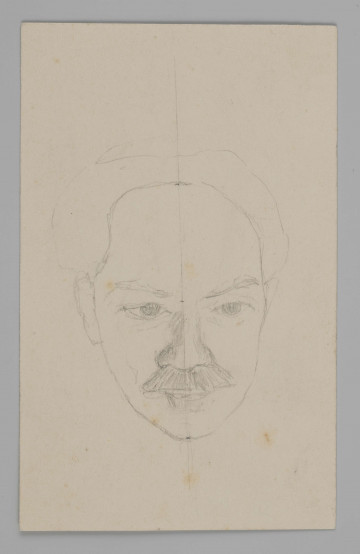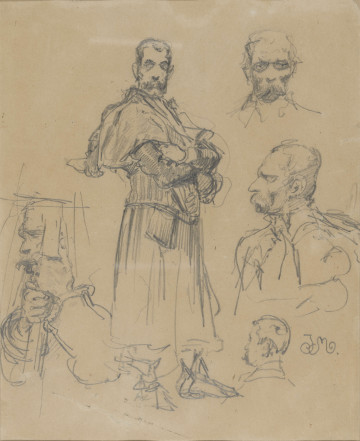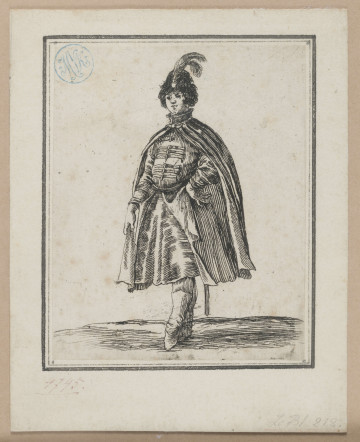
Sketch of Stefan Żeromski's face portrait
1913
National Museum in Lublin
Part of the collection: Portrait painting
Beauty and harmony are words that define the essence of a classical work of art. Rafał Hadziewicz, an academic shaped in the spirit of neoclassicism, was faithful to this interpretation in his work. A talented author of religious paintings and portraits, he was inspired by the great painters of the Italian Renaissance - Raphael, Domenichin, Veronese, and his contemporaries, the neoclassical sculptors Canova and Thorvaldsen. He shared his masters' views on art, including the view that drawing is the basis of a painting. During the Classical Revival, this belief was recognised as an important rule of the academic canon. Hadziewicz applied it both in his work and in his teaching. He taught at the Warsaw School of Fine Arts for twenty years, until its closure after the January Uprising. He introduced his own methods: students first studied drawing, copying the shapes of ancient statues, and only later worked with a model. During art history classes, he instilled in his students respect and humility for tradition and the achievements of great artists. Gerson recalled that the professor often said: "In the face of Raphael what are we, Pygmies".
During his studies at the Royal University in Warsaw, Hadziewicz, as a student distinguished by his talent and diligence, received a foreign scholarship to "improve himself in art". The evaluation committee obliged the young student that: "He will constantly visit galleries, museums of antiquities and private collections of paintings, noting down his observations and making small sketches of the more accurate pictures". During his stay in Dresden, Paris, Rome, Genoa, Parma, Naples and Venice, the scholar met his obligations conscientiously. He made hundreds of drawings, mainly of antique sculptures and reliefs, and copies of figures and fragments of compositions from Italian works.
During his stay in Italy, between 1831 and 1834, he produced Studium aktu męskiego [The Study of a Male Nude]. The drawing was most probably made by a living model posed in a pose expressing sadness and reverie. The representation of a seated man is characterised by perfect proportions, knowledge of anatomy, strong, chiaroscuro modelling that conveys the three-dimensionality of forms. It shows the beauty of the body characterised by the perfection of its structure. An almost identical image of the figure was repeated in a much later drawing from the 1970s.
Bożena Kasperowicz
Author / creator
Dimensions
cały obiekt: height: 19 cm, width: 25,5 cm
Object type
drawing
Technique
drawing technique
Material
paper, pencil, crayon
Creation / finding place
Owner
The National Museum in Lublin
Identification number
Location / status

1913
National Museum in Lublin

1801 — 1900
National Museum in Lublin

1648
National Museum in Lublin
DISCOVER this TOPIC
Museum of King Jan III's Palace at Wilanów
DISCOVER this PATH
Educational path